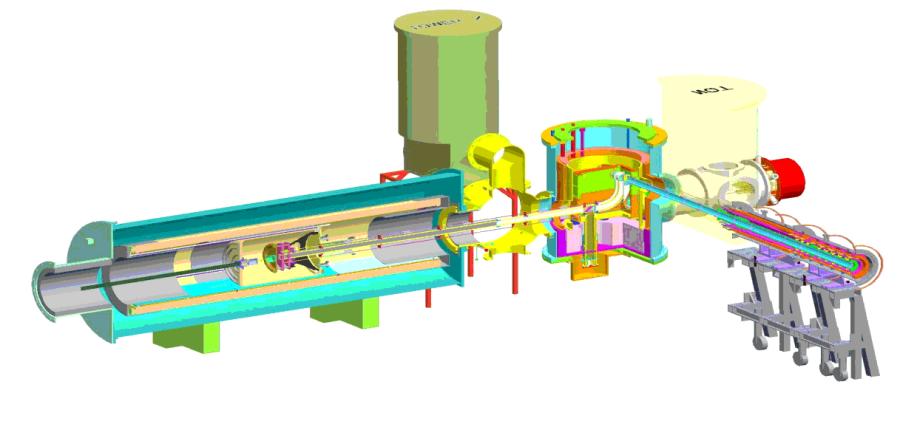|
CryoEDM
The cryoEDM experiment was formed to further improve the neutron EDM limit set
by nEDM, and maybe measure a non-zero value. The improvement in sensitivity will
be achieved by producing, storing and detecting ultra-cold neutrons (UCN) inside
superfluid helium. This allows a greater number of UCN to be produced by down-scattering
a cold neutron beam. A further improvement comes from
operating at a higher electric field which can be achieved in the superfluid.
Operating the experiment at cryogenic temperatures introduces significant technical challenges.
We need to fill a 250 litre volume with superfluid helium and hold it at 0.5K. The mercury magnetometer used by
the nEDM experiment will no longer work.
Therefore a SQUID magnetometer has been developed by the Oxford
group and installed in the cryoEDM apparatus.
The project is a collaboration
between: The Rutherford Appleton Laboratory;
Sussex; Oxford;
Kure, Japan; and the
Institut Laue-Langevin, Grenoble, where the
experiment is located.
CryoEDM aims to reach a sensitivity of
10-28 ecm, which will constrain many
particle physics theories, especially supersymmetry, which in turn, has helped set limits on
dark matter.
More information can be found on the collaboration homepage:
http://www.cryoEDM.org.
|

|
| The Institute Laue-Langevin, Grenoble.
|
|


